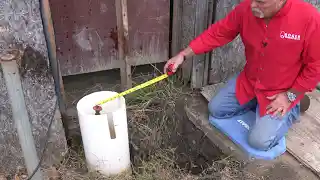Small plumbing updates can dramatically improve comfort and efficiency in your home – and they aren’t always as difficult as you might think. In honor of a special occasion (like Valentine’s Day) or simply because you have time to tackle a project, here are some straightforward DIY upgrades you can attempt, often without special tools or professional help.
1. Fix a Leaking Faucet
- Why it matters: A slow drip can waste water and drive you nuts.
- How to do it: Shut off water at the angle stops under the sink. Remove the handle, locate the cartridge or washers inside, and replace worn parts. Reassemble carefully.
- Tip: While you’re at it, you can also clean the aerator – it often accumulates mineral buildup that reduces flow.
2. Upgrade Your Kitchen Faucet or Sink
- Why it matters: A new faucet (or an entirely new sink) refreshes both style and functionality.
- How to do it: Turn off water, disconnect supply lines, remove the old fixture, and follow the manufacturer’s instructions for installing the new one.
- Tip: Double-check how many “holes” your sink has vs. the faucet you plan to buy. Common configurations are 1, 2, 3, or 4 holes.
3. Replace or Add a Bidet Toilet Seat
- Why it matters: Bidet seats add comfort, promote better hygiene, and can reduce the need for toilet paper.
- How to do it: Confirm you have an elongated bowl (if required), turn off water to the toilet, remove the existing seat, and install the new bidet seat according to instructions. Connect the bidet’s water line and ensure it has power if it’s an electric model.
- Tip: If your toilet is older, consider replacing the entire toilet with a more efficient model at the same time.
4. Swap Out or Clean Shower Heads
- Why it matters: Shower heads can clog or lose pressure over time. A new, low-flow or multi-spray head can boost comfort and save water.
- How to do it: Unscrew the old head (counter-clockwise), wrap new Teflon tape on the shower arm threads, then screw on the replacement. A handheld or magnetic docking model is especially convenient.
- Tip: If you’d prefer not to spend on a new fixture, try soaking the old one in vinegar to remove mineral deposits.
5. Flush or Replace Your Water Heater
- Flush the Tank: A basic annual flush removes sediment, preserving efficiency and lifespan. Attach a hose to the drain valve, run it to a drain or outside, and let water flow until it’s clear.
- Full Replacement: If the heater is old, you can swap it out for a more efficient model. Carefully turn off gas or electricity, drain the tank, disconnect lines, and follow installation guidelines for the new unit.
- Tip: Modern push-to-connect fittings make it easier to swap out water lines without soldering.
Bonus: Bath Bombs and Ambiance
- Reward for your efforts: After finishing your DIY tasks, indulge in a relaxing bath. Drop a favorite bath bomb in hot water, uncork a bottle of something celebratory, and enjoy the fruits of your handiwork.
Key Reminders
- Plan Ahead: Always know where your home’s main shut-off valve is, in case you need to kill the water flow quickly.
- Have Basic Tools Ready: Items like a pair of channel-lock pliers, an adjustable wrench, Teflon tape, and rags or towels are essential.
- Check for Leaks: After installing or upgrading any fixture, turn the water back on slowly and watch for drips.
- Mind the Warranty: Some fixtures have specific instructions for installation. Follow them to keep your warranty valid.




